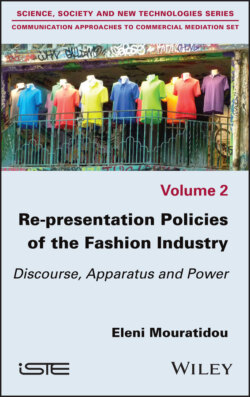Читать книгу Re-presentation Policies of the Fashion Industry - Eleni Mouratidou - Страница 10
I.2.2. A collective spectacle of reflexivity
ОглавлениеThe spectacular potential of the fashion industry16 lies particularly in its “managerial creativity” (Barrère and Santagata 2005), a process of establishing “a new relationship between creation, production and distribution [and] leading to a new creation and management complex” (Barrère and Santagata 2005, p. 96, author’s translation), of which many actors are part. If, as Frédéric Godart reminds us, “the work of the fashion designer exists only because there is an economic and industrial activity that is deployed to enable the production of clothing” (Godart 2016, p. 76, author’s translation), this same activity can also promote the latter through communication strategies. Fashion is a spectacle not only because what it produces – its goods – can be spectacular, it is spectacular because of the way in which its goods are promoted based in particular on a spectacular process of collective reflexivity (Mouratidou 2012, pp. 11–21): whether they are haute couture workers, ready-to-wear design studios, make-up artists, hairdressers, stylists, models, photographers, directors, fashion journalists, art directors, group presidents, decorators, architects, muses, trainees, assistants of assistants, etc., they are all part of the collective reflexivity process, the fashion industry stages and spectacularizes many trade bodies that could represent it. However, what I will focus on throughout this book is not so much the fashion industry’s representation processes as its re-presentation policies.
